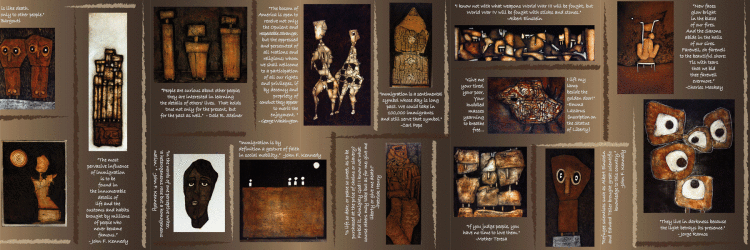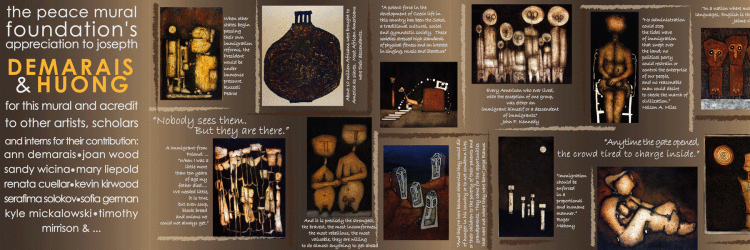Demarais was interested in both art and music. During high school, he spent his weekends across the Hudson River playing jazz trumpet across the Greenwich Village. He was drafted into the army during the last months of World War II and performed with the army band throughout Europe. After his discharge from the army in 1947, there was an unsettled period until 1948 when he entered the Manhattan School of Music and completed a Master Degree in Music Theory and Music Education.
His visible turning point in his career as an artist came in 1960 when he resigned his position as head of music department in a New York state high school and enrolled in the art department at Miami University at the age of 33. His talent and ambition brought him recognition for his early work in sculpture and ceramics. In 1965, after two years of teaching art and a year of doctoral study at Teachers College, Columbia University, Demarais began teaching printmaking at Trenton State Collage.
As a printmaker, Demarais specializes in intaglio relief. An intaglio may be define as the opposite of a cameo, with the figure concave, or indented, instead of convex, or raised. In intaglio printing from a
block indentation in the block is use to make the printed impression where as in relief printing the surface of the plate takes the ink. But Demarais has, as he puts it, synthesized the two processes printing from the incised lines and the surface having built up parts of the surface with acetate, vinil and wood veneers and other substances.
He died from complications of heart surgery in 1971 at the age of 44. His drive to create enabled him, in the short period allotted to him, to produce over 800 plates in his 7 years as a printmaker. In his relatively brief art career Demarais exhibited in over 100 national and international exhibitions and one man shows.
…“As if we knew in advance that his life would be short, he grasped it with both hands and filled it with work to the lastminute…”
…”Demarais’ pictures are turned inward. Their colors are dry and as if coming from soil. Brown, black and muted white –that is all which he needed. And one can do much with this: psychological sensitivities
which collide with the World outside. It was the fact that he was a sculptor which provided the understanding of spatial arrangements. Houses with steps, doors which lead into caves and black window-mouths are frequently his backdrops which provide the limits for his dream-world.
Humans never penetrate into this silent world. Nonetheless, they are not absent in Demarais’ work. Robbed of theirindividuality they lose themselves in a primordial timelessness. His forms, Demarais derived from nature. In countless sketches which he quickly drew he
created for himself a sort of stockroom from which he retrieved at any moment that which he wanted…”
Many of Demarais’ admirers see his work as social commentary –figures representing faceless people, compositions representing people attempting to get together but still remaining apart. But Demarais himself said, “I’m not sure what my paintings mean. I tell myself that, as an artist, I am avoiding confrontation, but I’m sure that my art expresses at least my subconscious reaction to life and its events.”
Demarais also said “Artists seem to fall into two categories: those who are extremely verbal about their work and those who prefer silence, believing there is little to say. I’m not exactly sure in which category I am to be placed… I find all definitions incomplete, contradictory and enigmatic.
I do know a few things about myself –know that the more I learn about the world, the more difficult it is, in a way, to live in it. The art process in part makes life somewhat more livable. This may be little delusion, but it seems to work.”
Demarais by using earth tones to paint simple forms of people, windows, doors, lonely people in the darkness of night, many of his works can be related to and transmitted the struggle and hard ships of
migrants to this country.



